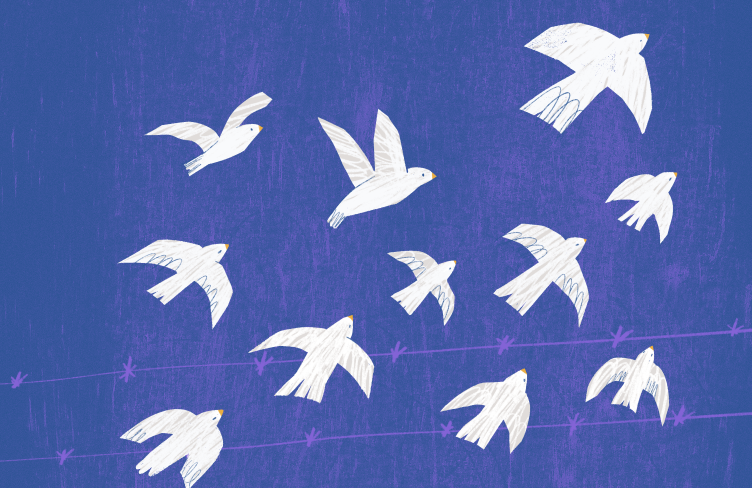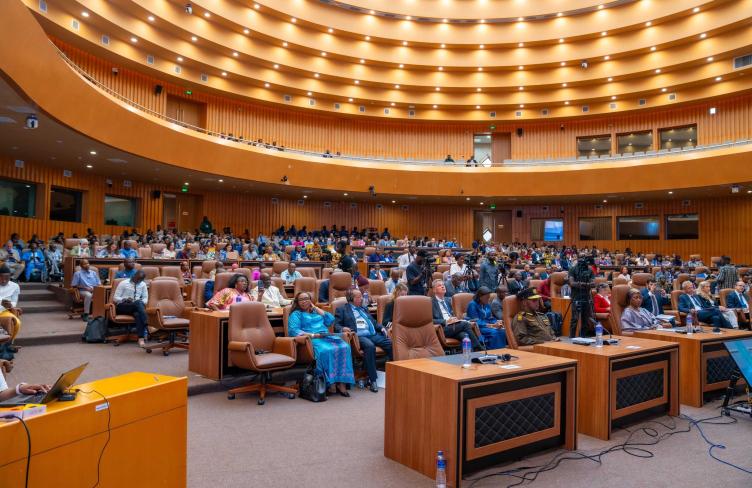Some years ago, while monitoring places of detention and coordinating a legal advice programme, I was referred to some cases of persons who had been victimized while serving their sentence behind bars. These were cases of sexual and gender-based violence (SGBV). In some of them, only their lawyers knew the full story. Yet even they would find it hard to document “that violence”, as their clients would shiver each time details were asked.
Silence, ultimately, can be dangerous, both for the individuals concerned and for those with a similar fate. Yet sexual violence in detention is a taboo virtually everywhere in the world: women and men, boys and girls, and gender non-conforming persons of all ages and all backgrounds can be at risk, trapped in the fault lines of imperfect systems.
And as pervasive as it may be, SGBV in detention is rarely raised in courtrooms or talked about in prison cells. Instead, it is hinted at, whispered or referred to in euphemisms. Countless jargon words in different languages are a proof of this. Prison rape is often the subject of jokes in public discourse. TV shows regularly trivialize the issue.
Stigma and humiliation prevent victims from speaking up; fear of retaliation or inaction disempowers them. And so, too little is known and little is done to prevent it. With few exceptions, there is no official recognition of the problem and limited research dedicated to the subject. National data are seldom collected, analysed and publicised.
Men prefer to report that they have been tortured, as rape often feels self-incriminating. Women may already have suffered sexual violence at the hands of an intimate partner prior to incarceration, underscoring the continuum of violence they experience during their lifetime. SGBV can be used to exert control, affirm power, force a confession or punish. And while each story is different, patterns of violence, exploitation and abuse can always be distilled; a kaleidoscope of stories that tell of tolerance towards violence in the society.
This realisation, coupled with the firm conviction that more could be done, was the inspiration to act. When I moved to ODIHR in 2015, I sought the support of my office and embarked on a collective, ambitious project with Sharon Critoph and other experts. Our first achievement was the publication of Preventing and Addressing Sexual and Gender Based Violence in Places of Deprivation of Liberty. The publication was a compendium of available knowledge at national and international levels to improve understanding of the subject, illustrate positive and negative practices and encourage States to undertake reforms.[1]
Before and in between: years of research, interviews with practitioners and meetings with police and prison officials, national human rights institutions and civil society organizations. Our research extended from Warsaw to Bishkek, from Rome to Washington.
Our analysis was informed by questions like: What are the factors that enable SGBV?, What are the dynamics of victimization and what are the consequences of it?” and, importantly, “What can be done to prevent SGBV?”
Our research quickly demonstrated that virtually any person deprived of their liberty is at risk if adequate safeguards are not in place. As APT has noted, risk factors that reinforce vulnerability can be either personal, environmental or socio-cultural.[2] In all cases, the State as a duty bearer has an obligation to act diligently and provide appropriate protection. Failing to address vulnerability factors may, in certain cases, amount to ill-treatment.
The second finding was that sexual violence is always “gendered” insofar as it is rooted in social acceptance of gender roles and is simultaneously driven by the desire to assert control or power.
Thirdly, SGBV in detention can take many different forms including, but not limited to, rape and attempted rape, sexual threats, harassment, humiliation, molestation and assault.
SGBV may constitute torture, as confirmed by the UN Special Rapporteur on Torture, when it is carried out by, or at the instigation of, or with the consent or acquiescence of, public officials.[3] Acts of SGBV committed in police custody, in pre-trial detention or in prison facilities may, therefore, constitute torture and other ill-treatment whether perpetrated by State and non-State actors. Accordingly, States have a duty to protect prisoners from SGBV and to prevent it.
Because the research was also informed by data provided by 27 OSCE participating States on policies and practices in place in their respective contexts to prevent and address this form of violence, our next step was to develop specific guidance for key stakeholders in criminal justice facilities including for those in an oversight role, namely national human rights institutions, national preventive mechanisms and civil society organisations.
The reason was simple: monitors can identify risk factors, detect misconduct and provide recommendations to authorities on how to tackle this form of violence. Monitors are often the only people that detainees can talk to about their abuse. But there was little guidance available on how we could integrate these considerations into our work and properly address the issue.
Integrating the Issue of Sexual and Gender-Based Violence in Detention Monitoring: A Guidance Note for Oversight Mechanisms, authored by Sharon Critoph and released by ODIHR in January 2021, is a comprehensive resource for monitoring bodies. It is structured to provide practical suggestions on how monitoring mechanisms can incorporate SGBV into their research and planning, how best to approach the issue of SGBV, and how to follow up once they become aware of incidents of abuse. It also identifies specific situations of risk for SGBV and the preventive measures that should be in place, providing suggestions of the types of issues monitors could focus on.
The publication also demonstrates how effective monitoring can help restore public confidence in the way places of deprivation of liberty are run and serves to increase the overall accessibility of closed institutions. Monitoring mechanisms can challenge the status quo, as well as the stereotypes connected with SGBV in places of deprivation of liberty. This resource empowers them with knowledge and tools to act.
Those people who inspired this work will never know it was their stories that sparked these actions, but it always takes one story to guide the path to change. And while they may have not personally benefitted from increased awareness in criminal justice institutions, others who will enter the prison gates after them may hope for better protection.
The road ahead is still long and paved with difficulties but it is this hope that guides institutions like ODIHR and APT to work to improve the implementation of human rights and contribute to making the world a safer place.
A testament to action, candles in the dark.
Blog by Graziella Pavone, Project Officer on Human Rights, Gender and Security issues at the OSCE Office for Democratic Institutions and Human Rights (ODIHR) in Warsaw. In this capacity, she develops and implements projects on the prevention of sexual and gender-based violence in deprivation of liberty, on human rights-compliant security sector reform, and on the Women, Peace and Security Agenda. Before joining ODIHR, she worked on rule of law, human rights and gender issues for the OSCE in Kyrgyzstan and in North Macedonia, on the prevention of human trafficking for the International Organization for Migration (IOM) in the Russian Federation, for the Permanent Representation of Italy to the OSCE and for various think tanks. She holds a Master of Laws in International Criminal Law, a Master in Russian and post-Soviet studies and a Bachelor’s degree in International Relations and Diplomacy.
[1] The compendium was authored by Elisabeth Duban, independent expert, with inputs from Sharon Critoph and practitioners from the International Committee of the Red Cross (ICRC), Just Detention International (JDI), the Association for the Prevention of Torture (APT), the United Nations Office on Drugs and Crime (UNODC) and the Geneva Centre for Security Sector Governance (DCAF).
[3] Report of the Special Rapporteur on torture and other cruel, inhuman or degrading treatment or punishment, Manfred Nowak, A/HRC/7/3, 15 January 2008, para. 34, http://daccess-ods.un.org/access.nsf/Get?Open&DS=A/HRC/7/3&Lang=E

